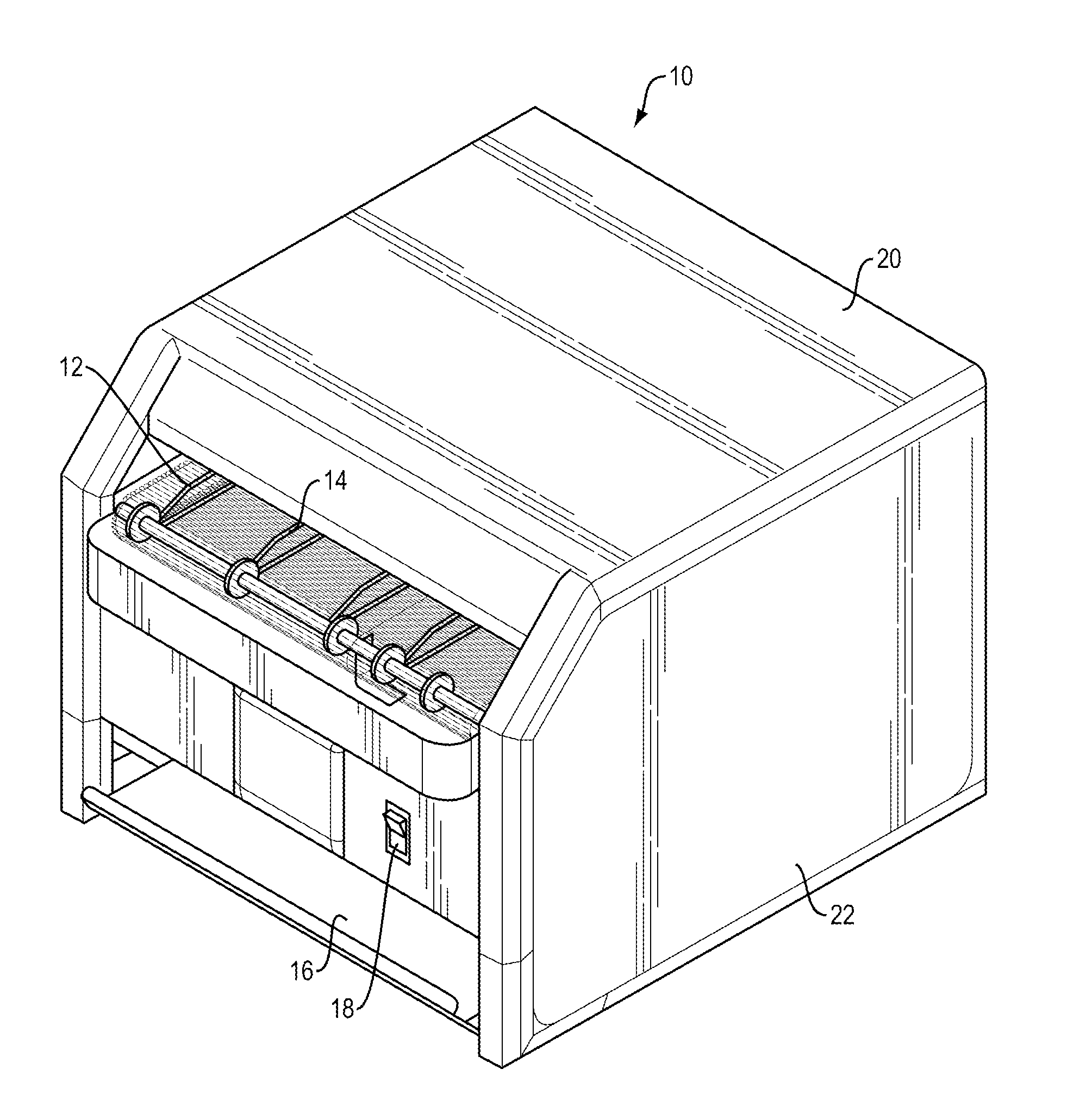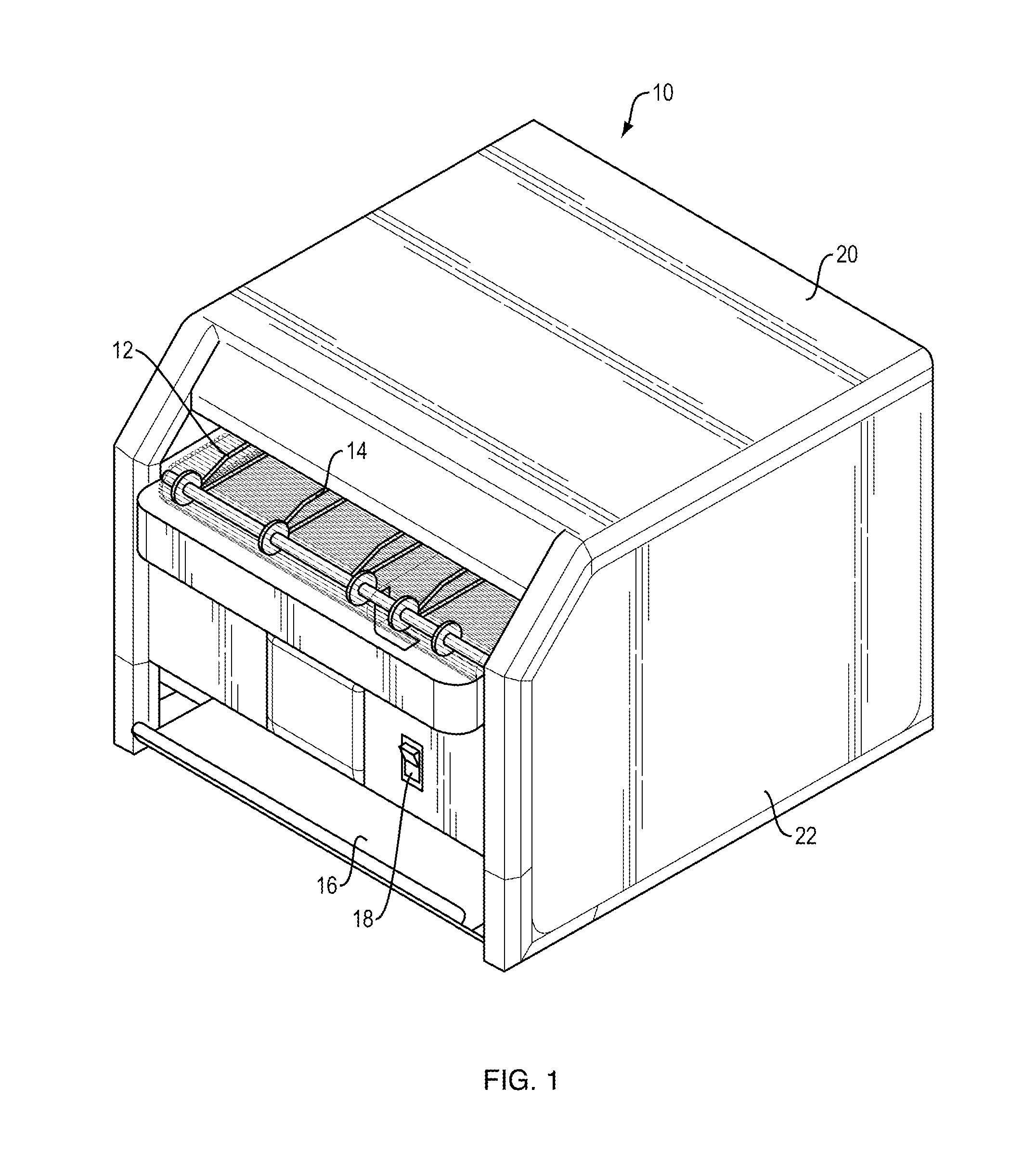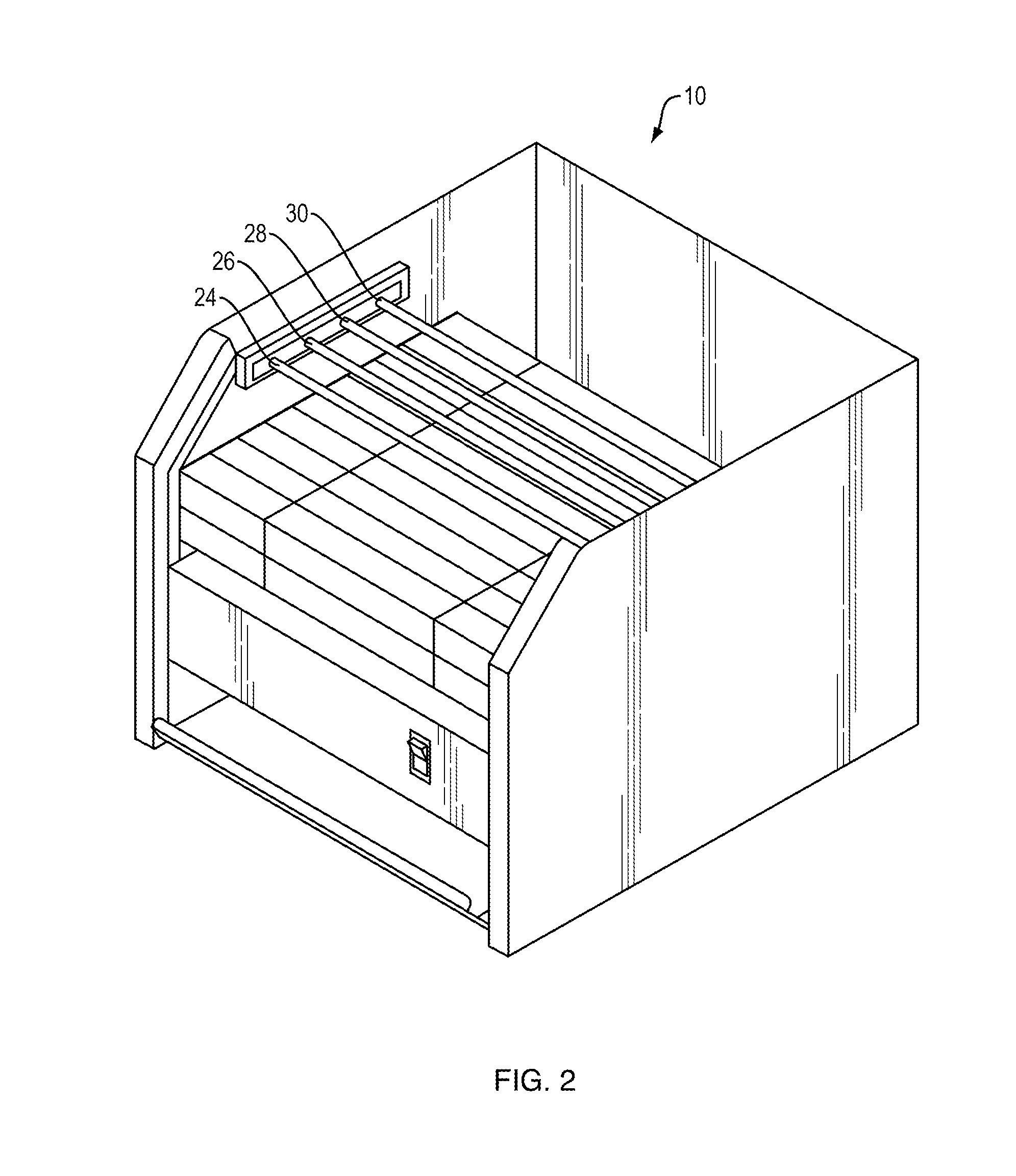Quick heating quartz toaster
a technology of quartz toaster and quartz, which is applied in the field of toaster, to achieve the effects of saving energy, saving energy, and preserving energy
- Summary
- Abstract
- Description
- Claims
- Application Information
AI Technical Summary
Benefits of technology
Problems solved by technology
Method used
Image
Examples
Embodiment Construction
[0030]As shown in FIG. 1, toaster apparatus 10 has a similar appearance to most commercial conveying toaster apparatus. The product is placed in opening 12 onto conveyor 14, which moves the product (usually bread slices) between top and bottom heating elements at a predetermined rate such that the product will be properly toasted when it reaches the end of conveyor 14. The product then drops from conveyor 14 to be available to a user via opening 16. Switch 18 enables the user to turn the unit either on or off. Other controls (see FIG. 7) might include devices to control the speed of conveyor 14 to permit adjustment of the degree of toasting as well as indicator lights to tell when the unit is on / off or at a particular temperature such as heating, operating, stand-by, warming, etc.
[0031]As shown in FIG. 2, panels 20 and 22 have been removed from toasting apparatus 10 to show top quartz heaters 24, 26, 28, and 30. Identical bottom quartz heaters (not shown) are positioned below convey...
PUM
 Login to View More
Login to View More Abstract
Description
Claims
Application Information
 Login to View More
Login to View More - R&D
- Intellectual Property
- Life Sciences
- Materials
- Tech Scout
- Unparalleled Data Quality
- Higher Quality Content
- 60% Fewer Hallucinations
Browse by: Latest US Patents, China's latest patents, Technical Efficacy Thesaurus, Application Domain, Technology Topic, Popular Technical Reports.
© 2025 PatSnap. All rights reserved.Legal|Privacy policy|Modern Slavery Act Transparency Statement|Sitemap|About US| Contact US: help@patsnap.com



